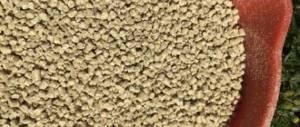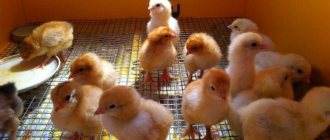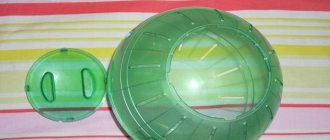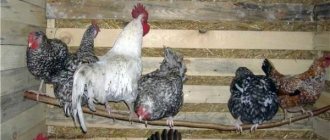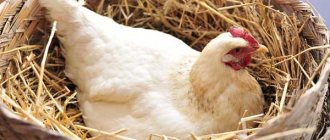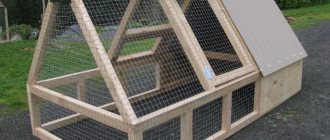How do birds behave together?
As you know, every living organism has its own needs, and they may differ. Many animals have their own diet, walking and sleeping. The same applies to birds. Some breeds have their own characteristics, which in one way or another may differ from their “brothers”. This issue is relevant and requires study, because many farmers prefer to combine breeding in order to get the benefits of several types of poultry at once. A common option for such livestock farming is the raising of laying hens and broilers.
Laying hens focus primarily on hatching eggs and standard meat supply. Broilers are bred exclusively for meat production; due to their large mass, they lay very weakly. But these are different species, so their behavior is different. By nature, ordinary laying hens prefer long walks and active feeding, but meat breeds spend more time passively. The same applies to the frequency of feeding, as well as methods of cultivation, so such a discrepancy is a concern for farmers who want to have two breeds.
Ideally, all types of animals can be housed separately: they need to have different diets, their own temperature conditions and certain conditions for walking and sleeping. But few people can afford such “apartments”, so you need to observe certain housekeeping subtleties. There are cases when adults of any breed can be kept together perfectly without causing discomfort, but this does not happen often.
While the chickens are small, they can be kept together, but it is worth considering that broilers are a breed of chicken that grow very actively, so they will quickly outweigh the laying hens. Such weight gain is actively observed already in the first month of life, and with their size they can trample laying hens, so they can build a separation. At this age they need to be provided with good nutrition and vitamins. At first, feeding with food, egg yolk, warm water or milk is also suitable. True, after the twentieth day of life you can add potato mash and grains to the diet.
During feeding, it is better to keep young broilers separate from laying hens, as they need a constant supply of food, while ordinary chickens are fed 4 times a day. If a chick is found to be lethargic in any breed and stops eating or droops its wings, it should be isolated and fed a mixture of egg whites and milk. If this does not help, you can use antibiotic drops.
Combining two different types of poultry in one room should be done very carefully. Sometimes the “greeting” is calm, but there are also cases of aggression from hens
It is best to carry out this procedure at night, when they will not be able to see each other, and by the morning they will have spent time together. It is dangerous to keep young individuals with adults - they will simply be pecked, so you need to maintain relatively the same physical mass.
Walking is very beneficial for any animal. Laying hens love to walk around all day, after which they begin to lay eggs, but broilers are less active, and they eat while sitting - it is more comfortable for them to sit and “brood” the weight. Therefore, when laying hens go for a walk, they can take their place. You can also separate an area where they can sit quietly: these can be ground cages or simply designated areas where they will not be disturbed by running laying hens.
How to Keep Layer and Broiler Chickens Together
How to raise chickens together?
Once the chicks hatch, they can be kept together. However, there is a nuance here: in the first 30 days, broiler chickens grow actively and quickly gain weight, unlike laying hen chicks. Therefore, the first birds often push the weaker chicks away from the feeders and eat their food. They can also trample weak chickens.
When broiler chickens have grown a little, they should be placed in cages and fed with special mixtures for broiler crops so that the young chickens quickly gain body weight. Their diet must include fermented milk products, which contribute to rapid weight gain.
After each feeding, the feeders are cleaned of food debris and washed.
The nuances of keeping chicks
The subtleties of keeping laying hens and broiler chickens in the same coop
When keeping laying and broiler chickens together, it is necessary to pay attention to some subtleties of their breeding:
- It is necessary to include feed, a vitamin complex, egg yolk, whey, and warm water in the daily menu;
- from the 21st day, the chicks can be switched to grain feed and wet mash, to which potatoes are added;
- feeders should be made long enough, and the lighting in the poultry house should be dimmed to reduce the aggressiveness of the chickens;
- lethargic and weak chicks must be immediately separated from the main young, otherwise they will be killed and trampled. Such chickens should be fed with whey, yolks and a vitamin complex;
- Young animals should be kept separate from adults, otherwise there will be fights in the house. It is optimal to keep birds of the same age in the same room;
- From 30 days you can keep young animals together. It is better to place the bird at night. In this case, they will wake up together for the morning meal.
Arrangement of the place
Where to keep a bird
Before you have broilers or laying hens in your country house in the summer, you need to determine where they will live.
These birds need a comfortable place where they can calmly wander, peck grains and lay eggs.
When keeping chickens on a summer cottage only in the summer, it is not necessary to build a permanent chicken coop. To start, try keeping birds for one season. Poultry farming may not be your thing.
But you will still have to arrange a separate space. Otherwise, the chicken will rush all over the area, and problems will arise with collecting eggs.
Set up a wooden or brick structure with a roof and three walls. It should be located in an open, well-lit place with space for walking.
There must be shade on the territory. Birds will rest there if there is strong sun outside.
Do you need a chicken coop?
If you have been involved in poultry farming for several years or have decided to keep chickens year-round, build a good-quality chicken coop.
It should be in a well-lit area, but not under the scorching sun. Make sure that this is not a low-lying area, otherwise the room will constantly flood when it rains.
Do not build a structure under trees, near a road or a dog house. Chickens love peace and solitude. Constant barking, sounds from cars or fruit falling from trees will have a bad effect on their well-being.
This is discussed in more detail in the article “Construction of a summer chicken coop at the dacha.”
If you decide to have chickens for the summer, you don’t have to insulate the chicken coop. But be sure to consider the size of the room. 20-25 broilers or 10-12 egg-laying chickens are placed per 1 m2.
Walking yard
Be sure to provide a place for chickens to roam. You should not let them roam freely around the site. Birds will trample on the beds and rake them with their paws.
Some breeds of chickens fly well, so you will have to catch them from your neighbors or trim their wings.
Build a fenced enclosure and be sure to install a canopy. Birds will hide under it during bad weather.
All the nuances are described in the article “Building a pen for chickens with your own hands.”
Construction of a poultry house
The chicken coop should be built in such a way that 1 to 2 dozen chickens will feel comfortable in an area measuring 2*3 meters. At the same time, the quality and fundamental nature of the structure depends on the period in which the selected rock will be kept.
Spring-summer breeding
Keeping chickens starting in spring and summer assumes that the poultry house does not require insulation and a simple shed with a roof or a canopy that can protect the birds in case of bad weather and a pen is suitable as a room for the chickens to live. No additional lighting is required in the summer.
Year-round chicken breeding
Breeding and maintaining a population of chickens on a summer cottage throughout the entire calendar year will require the construction of an insulated structure in order to preserve the population during the onset of winter cold. It is necessary to provide heating that would keep the temperature from 11 to 22°C. If there is enough natural light in the summer, then in the winter they often resort to artificial lighting to maintain daylight hours up to 18-20 hours.
Interior arrangement
Among the recommendations given by professional poultry houses, the dimensional parameters of the internal arrangement are important:
- the height of the chicken coop should be within 2.2 m,
- perches are made at a height of 1.1 m in length based on 1 hen with 15-20 cm of space,
- the window is also placed at a distance of 1.1 m from the floor, it is better if its dimensions are 0.5 * 0.5 m with a chicken coop area of 1.5 * 2.0 meters; as the area increases, the number of windows increases,
- the floor is lined with sand mixed with shavings,
- For the free exit of chickens from the chicken coop, a hole half a meter wide is made.
Equipping with nests is of no small importance in interior design, especially if the owner intends to breed and raise an egg breed. As a nest for hatching chickens and laying eggs, you can choose a box or make your own structure with a width of 0.5 m and a depth of 0.6 m, which is covered with straw or hay. You can watch the video to see how it looks correctly. One nest is usually enough for 3 laying hens.
You can watch a video on how to set up a chicken coop.
Diseases - diagnosis and treatment
Inexperienced breeders, as well as professionals, have problems associated with chicken diseases.
To avoid the negative consequences that infectious, parasitic and other diseases can cause, it is necessary to promptly identify the symptoms, identify the sick bird under quarantine conditions and begin treatment.
It is important to examine birds daily for warning signs. At the initial stages of the disease, the following signs appear:
- the bird is lethargic;
- rarely gets off the perch;
- inactive and sitting with eyes closed;
- sudden changes from a state of calm to excitement;
- heavy breathing, atypical sounds.
If the following symptoms are present, treatment should be started immediately:
- mucous discharge;
- inflammatory processes near the organs of vision or from the respiratory system;
- the condition of the feathers deteriorates;
- the functioning of the digestive system is disrupted.
It is important to identify the problem in time, establish a diagnosis and prescribe appropriate treatment with medications, and it is also necessary to strictly adhere to the prescribed hygiene and sanitary requirements.
We raise meat breeds
How to raise chickens in the country for meat? When buying chickens of meat breeds, first of all pay attention to their appearance. Signs of chick health are:
- activity;
- soft tummy;
- invisible umbilical cord;
- lush shiny fluff.
With good maintenance and proper feeding, chickens reach three kilograms in weight by two months of age.
When purchasing meat breed chickens, pay attention to their condition. The room for chickens should be well ventilated and lit
Fence the area so that cats and rodents do not have access to it, otherwise you risk being left without a bird. A strong mesh around the entire perimeter will help keep cats out, and in order to get rid of rodents, you need to poison the area before you get chickens
The room for chickens should be well ventilated and lit. Fence the area so that cats and rodents do not have access to it, otherwise you risk being left without a bird. A strong mesh around the entire perimeter will help keep cats out, and in order to get rid of rodents, you need to poison the area before you get chickens.
Before placing the chicks, sprinkle the floors of the room with fluff lime at the rate of 0.5 kg per 1 square meter, and lay wood shavings on top.
In winter, the layer should be no more than 20 cm, and in summer - about 10 cm. At the first time of keeping, provide the purchased chickens with a temperature of 28-30 degrees, reducing it by a couple of units every week.
If you have a large enough room for chickens, install a heater in it so that the chicks do not wander away from the heat source. During the period of early growth, they will also need round-the-clock lighting. Over time, it can be reduced and left only near feeders and drinkers, and when the chickens reach four weeks of age, become stronger and gain strength, release them into fresh air.
In order for your chickens to grow at the right pace, use special feed: the first 4 days - pre-start, before reaching a month of age - start, after - finish.
How to raise broilers
The most difficult and dangerous period for a broiler’s life is the first day of life.
To minimize the likelihood of chicken mortality, it is necessary to create favorable living conditions for them:
disinfection - it is especially important to do this after each change of livestock. The walls are treated with lime mortar in two passes;
elimination of drafts - for this purpose, the walls are plastered, then insulated with plasterboard or wood;
young individuals are sensitive to temperature conditions - in the first weeks of life it should be maintained at around 30 degrees
The indicator is reduced gradually - a sharp drop is fraught with the development of diseases and death of broilers;
in the first months, lighting is provided around the clock. Then daylight hours are gradually reduced to 15-16 hours;
air humidity must be maintained within 60 degrees. Fungal infections may develop in a room that is too damp;
high-quality ventilation - an exhaust hood will be required. As a last resort - several windows;
The floor of the poultry house is made of sawdust or straw. The layer thickness is at least 5 cm. The flooring needs to be changed periodically.
Reference! The optimal age for purchasing chicks is 10 days. At this stage of life, babies will be able to quickly adapt to new conditions.
You can place livestock in two ways:
- on the floor;
- in cells.
In the first case, you will be able to save on materials; in the second, you will get a number of advantages:
- many more individuals can be placed in cages than on the floor;
- costs for lighting and heating will be lower;
- keeping in a cage is safer and more hygienic - all garbage is collected in a special plastic tray.
Poultry house equipment
When building a chicken coop, the need for ventilation is taken into account; a pipe or an ordinary window is suitable for this. The holes are covered with mesh to prevent rodents from getting inside.
The temperature range for laying hens is from -2 to +27 °C; certain breeds of chickens lay eggs in winter
It is important to provide suitable conditions for them in cold weather - in addition to the ceiling and walls, the floor is insulated. Previously used insulation materials that are laid out 15 cm thick are suitable.
About 2 times a month another 5 cm is added - by spring this layer will “grow” up to half a meter. The processes occurring in the insulation will contribute to additional heating of the room.
Nests for laying hens are located in secluded places, corners of the chicken coop. A threshold 5 cm high is placed at the entrance. Wooden boxes with sawdust or straw are suitable for nests. The perches are located on the wall farthest from the entrance, the hole is on the east, the window is on the south. Compliance with the recommendations contributes to the raising of laying hens in favorable conditions.
Feeders for dry grain and flour mixtures are placed along the walls and equipped with sides that prevent the spread of feed. There is also a sippy cup here. The poultry house requires a box with a mixture of sand and ash. Chickens use similar litters to get rid of parasites. But this does not exclude mandatory disinfection, which is carried out once a quarter: dissolve 2 kg of lime in 10 liters of water and cover the walls, floor and perch with the mixture.
Typical mistakes during construction
When building a poultry house, newly-minted breeders neglect the recommendations of specialists and begin construction without drawing up drawings: it is fraught with the penetration of rodents into the poultry house, spreading infections and harming chickens, flooding and the appearance of fungi and mold.
Lack of protection against rodents
The walls of the structure must be raised above the ground level - the insulation should not come into contact with the soil. Otherwise, rodents will settle in the room, and the risk of flooding cannot be ruled out. To prevent rats from disturbing it, it is recommended to sprinkle the soil under the insulation with crushed glass.
Experienced farmers lay up to 5 rows of brickwork (basement) on the foundation, and then install a frame made of beams. A reinforced mesh with a width of 600 mm or more is laid on the base. Fix the mesh with dowels. When arranging the floor, the fertile layer of soil is removed, crushed stone is added in a layer up to 10 cm thick, foam sheets are laid and a concrete screed is poured.
Using unsuitable materials
It is not recommended to make the lining of internal surfaces from chipboard, plastic, plasterboard, isoplat. The listed building materials absorb moisture. With heavy rainfall, they begin to collapse, mold appears, and toxic substances are released.
Making your own chicken coop
To make a broiler chicken coop with your own hands, designed for 20 chickens, you will need the following materials and tools:
- Bricks and cement.
- Pebbles, crushed stone.
- Wooden beam 100x100 mm.
- Beam 50x100 for logs.
- Planed board 15–20 mm thick.
- Mineral wool.
- Metal brackets for fastening.
- Metallic profile.
- Self-tapping screws and nails.
- Building level.
- Screwdriver.
- Drill.
- Saw and hammer.
- Ruberoid.
- Roulette.
- Construction resin.
- Foil insulation.
Mineral wool can be replaced with other insulation. If the construction is carried out using sandwich panels, there is no need for insulation. Metal brackets provide additional fastening of the load-bearing beams. These elements must be at least 3 mm thick and 50–100 mm wide.
Step-by-step instruction
Before making it yourself, a drawing is drawn up and a place for the chicken coop is selected. The first step is to make a columnar or pile foundation:
- the area for the chicken coop is marked;
- in the corners and along the perimeter you need to make marks every 1.5–2 m;
- in marked places, holes are dug 0.5 m deep and 0.4–0.6 m wide;
- square columns of brick or cinder block are laid in the pits, cement mortar is used for fastening;
- after the cement has dried, the space between the pillars and the pit is filled with gravel or crushed stone.
After the foundation has dried, you can begin direct construction with your own hands:
- Place square sheets of roofing felt on the foundation pillars.
- Place horizontal support beams from 100x100 timber and fasten them to each other.
- The fastening is completed with brackets on self-tapping screws.
- At the corners of the future chicken coop, place 4 vertical support beams made of 100x100 timber.
- Temporarily, using boards, attach vertical beams on top to fix their position.
- Attach the vertical beams to the horizontal beams at 45°, so that each of the four load-bearing pillars is supported by 2 beams. The opposite ends should be supported by horizontal beams.
- Strengthen the upper horizontal beams where the roof will rest.
- Make rafters for the slope from 50x100 timber by sawing them off at an angle of 30°, connecting them on the upper horizontal beams.
- Lay a 50 x 100 beam horizontally on the lower beams every 0.5 m.
- Fill the space between the floor joists with insulation.
- Lay the floorboards on the joists and attach them using self-tapping screws or nails.
- Cover the walls with boards.
- Attach timber from the inside of the wall every 0.5 m, as in the case of floor joists.
- Place insulation into the wall openings and secure it with tie wire.
- Attach the unfolded rolls of reflective foil to the walls with your own hands onto the insulation, starting from the top.
- Pin clapboard boards onto the reflector from the inside.
- Lay boards on the roof under the slopes.
- Lay the roof with sheets of roofing felt.
- Place slate or tiles on the rafters, leaving space for vertical ventilation.
- Seal the cracks.
- After the sealant has dried, treat the wood from the inside using a moisture-proof solution, and after it has dried, cover the floor and walls with your own hands with a lime solution.
- Let the lime dry, and then arrange the chicken coop and fill it with bedding.
Instead of a vertical beam for walls, you can use a metal profile.
Common mistakes
When building a chicken coop with your own hands, you can make such mistakes that you will have to completely redo the structure.
- If you build a chicken coop on a small hill, its walls will be almost level with the slope. In this case, the foundation often washes away, and the chicken coop cannot be made wider by adding extensions.
- Lack of protection from mice and rats is also a common mistake. If you build on the ground without leaving a protective distance between the bottom layer of insulation and the ground, the chicken coop is exposed to the possibility of flooding and opens access to rodents.
- It is recommended to fill the lower part under the floor insulation between the foundation pillars not with crushed stone, but with broken glass, which will prevent rodents from digging.
- For cladding, it is not recommended to use plasterboard, chipboard, isopleth, or PVC plastic.
When building a chicken coop with your own hands, you need to carefully choose a place and draw up a plan. You should rely on financial capabilities and available materials.
Best breeds
At home, it is better to raise two types of chickens: meat and laying hens. The first type will provide the whole family with meat, and the second will give fresh eggs. The development and reproduction of chickens depends on feeding methods and living conditions. Of course, birds are quite unpretentious to food and can eat any plants, vegetables, fruits, and feed.
But, if your goals are aimed at fattening broiler chickens, then it is important to supply the feed with various nutritional supplements. They will enhance the growth and development of muscle and meat fibers of the chicken.
Moreover, these birds belong to those types of living creatures that tolerate cold well. Chickens at the dacha feel great in winter, feed and even reproduce.
Suitable types:
- Leghorns.
- Loman Brown.
- Minorcas.
- Hisex.
These species are well adapted to any climate and habitat, are unpretentious in food and tolerate diseases well. We can say that they have proven their functions well in industrial poultry farming and among farmers.
Buy young chicks from the market at 4 months of age, at this special time they are just starting to lay eggs. At first, the testicles come out small, but over time they increase to full size.
It is better to purchase more females and fewer males: for 10 hens, 1 rooster. If your plans do not include breeding chickens, then a rooster is not necessary.
Meat breeds, best varieties:
- Broilers are the most popular type.
- Brahma.
- Cornish.
Meat-type chickens do not lay eggs well, but they gain the required weight very well. It is necessary to purchase males in larger quantities, which are naturally larger than females.
What to feed?
Raising chickens for meat requires intensive nutrition. Therefore, in order for chickens to gain weight well, they must have food constantly.
Broiler chickens are ready for slaughter when they are 50 days old. Farmers are interested in getting as much meat as possible from each bird. Therefore, they must think through and well balance their diet so that the bird has time to gain sufficient weight by this time. Fattening broilers for meat begins with the birth of chickens. Their diet should include millet and boiled eggs. From the third day you can already add green food to the menu.
it is necessary to mix chalk and crushed shells
Broiler chickens kept at home are fed mixed feed. Because it is rich in essential substances for rapid weight gain. Broilers eat well wet mash, to which you can add crackers or leftover bread from the table. Broilers can be fed food scraps; these birds have an excellent appetite and will eat almost anything. However, please note that the food must be fresh. Wet mash should not turn sour in the feeders, otherwise the number of animals will begin to fall.
To gain weight faster, use dairy products. Broiler chickens eat yogurt, whey and cottage cheese well.
Some farmers resort to yeast mixtures to stimulate weight gain. The grain is mixed with dry yeast and diluted with water. The mass is placed in a warm place for 7 hours. To increase the calorie content, you can add pumpkin, potatoes and carrots to the mixture.
You should also remember about water, to which there must be constant access.
Varieties of broiler breeds
Broilers are cross-breed birds that are the result of crossing different breeds. Almost all broilers have white plumage, a large chest and strong legs. Since broilers are aimed at high meat productivity, it can be understood that they lay very few eggs.
The main feature of broilers is their genetic predisposition to rapid weight gain without special costs for feed. Thus, a broiler chick at the age of one month already reaches a weight of 2.5 kilograms.
A distinctive character trait of broilers is their calm disposition, combined with high activity.
Table 1. Common broiler bird breeds
What breeds of chickens to choose for eggs
Laying hens differ from meat breeds of chickens not only in their taste, but also in their early ability to lay a larger number of eggs, without the instinctive desire to hatch chickens. If you plan to regularly cook chicken, it is better to choose hybrid breeds.
Rating of the best breeds of laying hens:
1. Loman Brown - grown on industrial farms and in home chicken coops. They lay about 320 eggs per year, weighing 64 grams. At six months of age, the first eggs begin to be laid. The breed is quite large and the meat is tender, making it suitable for food and eggs.
2. Hisex Brown - also suitable for meat, but in warm weather it requires more feed than the previous breed. Each hen will produce 315 eggs per year, weighing 70 grams.
3. Hisex - unsuitable for growing for meat due to its light weight, a little more than one and a half kilograms. They lay 280 eggs per year, weighing 63 grams.
4. Kuchinsky Jubilee is a classic breed, familiar to many from childhood. Each year they produce 220 eggs, each weighing 60 grams. They lay eggs from six months.
5. Pushkin striped-motley - a mixture of several breeds makes these chickens resistant to different living conditions. They have tasty meat and high egg production, reaching up to 220 eggs per year, weighing up to 60 grams. The first eggs begin to be laid at 5 months. They are also champions in egg fertility, which is above 90%
If you are planning to replace chickens with your own chickens, pay attention to this breed.
6. Minorca - due to its weight up to 2.5 kg, it is suitable for raising for meat and keeping for eggs. They lay eggs from five months. They have fairly large eggs, weighing up to 80 grams. Every year, each hen produces up to 215 eggs.
7. Russian white - lay eggs from the age of five months and produce about 200 eggs per year, weighing 58 grams. The chickens are small, up to 1.8 kg.
8. Orlovskaya - grown in Russia for more than two centuries. They begin to lay eggs at the age of six months; up to 200 eggs can be obtained from each individual per year.
9. Leghorn - lays about 200 eggs annually, but eats little. Chickens weigh up to two kilograms. This breed is distinguished by early egg production, the first eggs appear at four months.
10. Andalusian Blue - a mixture of black and white minoras with blue fighting chickens. They are more suitable for decorative keeping, as they lay up to 150 eggs per year, weighing about 58 grams each. They begin laying eggs at six months of age.
These are the most unpretentious breeds that are easiest to keep in a private home without special knowledge.
Breeding chickens at home for beginners
For summer walking, a barn in a fenced area is also suitable, but it is still better if it is a specially built mesh pen with separation of roosting, eating and egg-laying areas. Discipline and cleanliness of keeping birds ensure their protection from disease and the fulfillment of their direct duties.
To house chickens in winter, a heated room is required. By the way, with good lighting in the daytime in order to simulate circadian rhythms. Sawdust is usually used as flooring, which collects waste products well and is easy to clean. You can also use peat moss, straw, wood shavings and special mixtures.
About chicks and pullets
When buying chickens, it is better to contact trusted breeders. Or take the advice of friends who already have chickens. Healthy chicks behave calmly, are mobile, their umbilical ring is closed (up to 2.5 mm), the cloaca is pink, clean, the down is soft, evenly fluffed, the belly is not bloated.
Separating them by gender is difficult. In poultry farms, crosses are usually raised and sorted according to plumage color. For example, beige is female and white is male. The older the chickens, the more expensive they are, since their survival rate is higher.
Week-old chicks should be placed in a warm room. Lay a paper bedding and sprinkle chicken feed on it. In the future, you can add corn grits, chopped eggs, semolina, cottage cheese, chalk, boiled vegetables, and ground egg shells to the diet. It is unacceptable for the room to have drafts or high humidity. Why? Yes, because chickens can catch a cold and die.
When purchasing young chickens, you should pay attention to their appearance. They should be moderately vigorous, clean, not shabby, with bright skin on the tufts and beard. Unscrupulous sellers sometimes sell adult chickens under the guise of pullets
But their egg production reserve may already be exhausted
Unscrupulous sellers sometimes sell adult chickens under the guise of pullets. But their egg production reserve may already be exhausted.
Of course, different breeds have some differences in the sex and age characteristics of cockerels and hens. Experienced breeders know their breed. As a rule, males have a brighter beard and comb, large sizes, long and bright flight feathers, a high arched tail with pointed feathers - braids, powerful developed paws with spurs.
Chicken care
Caring for chickens is not as difficult as it might seem. It is recommended to carry out daily feeding two to three times a day at the same time, collect eggs from egg-bearing breeds, and add water to the drinking bowls.
Change the water as necessary, clean drinking bowls and feeders that contain litter, droppings, insects and pieces of spoiled food. Any contamination can cause an intestinal infection.
In summer, you can feed grass and tops, and in winter, hay - chickens love to tear blades of grass with their paws. About once a month, a complete replacement of the litter is required to prevent unpleasant odors and parasites.
If possible, consider keeping chickens on Netto-Plast deep litter (sawdust + bacteria): the chicken coop is dry, warm in winter, no smell, no flies and cleaning every 3 years! The removed litter can be reused as compost.
Nest boxes should also be cleaned monthly. Once every six months, you need to check the integrity of the walls of the premises and structures, and the complete sanitization of the chicken coop.
Study all the materials on the Internet about raising chickens at home for beginners from scratch to quickly understand the most important thing for success.
Good luck!
Subscribe to site updates and our channel “Chicken” in Yandex.
See you later, colleagues! In the meantime, we will prepare new and interesting information for you!
See modern products for poultry and livestock farmers that improve the health of pets and make our work easier.
Features of maintenance and care
Widespread practice shows that chickens are best suited for growing on a personal plot. It is quite easy to create suitable conditions; they are extremely unpretentious in food, and in the summer they are able to obtain it on their own. As a result, you can regularly obtain highly nutritious eggs and dietary meat at minimal cost.
Premises and conditions
Adult birds and fairly mature young birds are unpretentious to their living conditions. The minimum safe temperature for them is -2 C, but starting from +17 C, laying hens noticeably reduce the number of eggs they lay. Chickens can be kept under the following conditions:
- in cells;
- in special chicken coops;
- in barns;
- in a barn with other domestic animals;
- in the attics of summer kitchens;
- in winter, when there is no place to raise poultry on the farm, conditions are created for them even in the basement.
Any chicken coop must have a perch, which is a fairly thick pole (3-4 cm in diameter). Laying hens also need nests; one will be enough for 3-4 hens. Provide feeders and drinkers to ensure your birds are always fed and have plenty of water.
This is very important for their health and comfortable living. As for the construction of chicken coops, they are usually built from boards, and in the northern regions, board walls are additionally insulated so that the birds do not freeze in winter
Before moving in, the walls and floors are treated with lime to destroy pathogenic bacteria and fungi. The floor must be covered with sawdust, straw, and dry grass. In summer, its thickness may not exceed 5 cm, but in winter it is necessary to lay at least 10 cm. The floor is usually made of earthen, bitumen or plank. But in those regions where there are a lot of rodents in summer and autumn, the floor of the chicken coop is raised on legs 30-50 cm from the ground. To make it more convenient for birds to enter such a house, a board is placed at an angle in front of the entrance.
Proper diet
In any household, especially if there is a vegetable garden, there is always something to feed the chickens. These birds are absolutely omnivores. They can eat both special feed and grain mixtures, as well as tops of garden plants, herbs, root vegetables, vegetables and fruits, bread and even leftovers from the master's table. Keeping chickens is not expensive if you prepare some of the feed yourself.
It is important to feed laying hens correctly, adding eggshells, chalk, salt and charcoal to their diet. After all, along with the egg, a lot of calcium leaves their body, which needs to be replenished. There should always be clean water on walks, in enclosures, chicken coops and cages, and in winter it is necessary to ensure that it does not freeze
For chickens it should also be warm.
If you plan to raise chickens on a personal plot, it is advisable to give them the opportunity to roam freely in the summer. This is very useful not only for the birds themselves, but also on the farm. During such walks, birds collect worms and pests, eat weeds, seeds, and fallen fruits. At the same time, you can save significantly on feed.
Maintenance rules in winter and summer
As already mentioned, caring for this poultry is quite simple.
It is important to maintain cleanliness, proper feeding and temperature control (for those species that require it). If the poultry on the farm is kept in cages, they must be cleaned daily
With floor breeding, one cleaning and replacement of bedding per week is sufficient.
In the summer, when the birds spend most of the day walking, you can clean the chicken coop much less often. But in winter, the litter becomes more dirty and therefore requires more frequent cleaning. If water somehow gets into the chicken coop during the rains, the litter must be changed immediately. Despite the fact that chickens rarely get sick, they are very susceptible to respiratory diseases.
In winter, it is important to provide hens with additional light, since they lay eggs only during the day. On average, daylight should be maintained from 6 a.m. to 7 p.m.
However, some poultry farmers rely on natural daylight hours and do not notice a significant drop in egg production.
The menu of laying hens in winter is also somewhat different from the summer. Before going to bed, it is necessary to give them grain, because its digestion helps the bird to warm up at night and not freeze. The rest of the menu during this period consists of compound feed, but if possible, you need to pamper the birds with herbs, vegetables, and root vegetables.
Where to start breeding broilers at home
Raising broilers at home begins with the selection of parent stock. If you are a beginning farmer and this term is not yet familiar to you, a little clarification is necessary.
The parent flock is a number of adult male and female birds that are kept for the purpose of breeding young animals. Considering that the health and productivity of future generations of chickens depends on the parent flock, the choice of breeding individuals must be approached very responsibly.
When choosing breeding hens, use the following tips:
- Choose only young and absolutely healthy chickens. Old or sick birds will not be able to produce healthy offspring.
- Recommended parent stock ratio; one rooster for eleven hens. It is not worth keeping more roosters; this will negatively affect the fertility of eggs.
- To feed breeding birds, use only fresh and high-quality feed.
The technology of raising broilers has many nuances. For example, when broiler chickens have just started laying eggs, their eggs are usually not used for incubation. Eggs from chickens whose age ranges from 8 months to a year are suitable for incubatory hatching of chickens.
Zootechnical standards
Breeding broilers at home in cages is carried out in strict accordance with established standards. Only their observance will allow the birds to grow healthy and weighty.
In general, the technology for raising broilers includes the following nuances:
Day-old chicks are placed only in a warm room. It is advisable that on the first day after hatching the room temperature is within +32+34 degrees
Subsequently, this indicator begins to decrease (0.2 degrees per day), and by the end of the first week the temperature in the barn should not exceed +16+18 degrees. Air humidity also plays an important role, since the health of chickens and the rate of weight gain directly depends on it. It is important that the humidity in the room for chickens and adults does not exceed 50-70%. Attention should also be paid to the feeders, or more precisely, their number. If you use trough models, one container will be enough for two individuals. When using large round feeders, one instance will be enough for 40-70 animals. Young chickens are watered from vacuum drinkers (1 drinker per 50 birds), and for adult chickens it is better to install nipple models
One such drinker will be enough to provide water for 10-20 animals.
One such drinker will be enough to provide water for 10-20 animals.
There are enough ready-made drawings of broiler cages on the Internet with different heights, widths and capacities. Knowing the size of the room in which the birds will live and the approximate number of birds, you can easily make such cages yourself. More detailed installation instructions can be found in the sections below.
Dimensions and room
The cage manufacturing technology itself is simple, but when making cages for broilers, you need to take into account the dimensions of the bird itself and the size of the room in which the livestock will be located (Figure 2).
On private farmsteads, it is enough to simply arrange the cages in the barn. But, if you are planning to raise broilers on an industrial scale, the cages are placed in several tiers and each contains 10-20 birds.
Figure 2. Ready-made drawings of cells with dimensions for making them yourself
The room for installing the cages must also meet certain requirements. Firstly, it must be dry and draft-free. Secondly, it must be warm enough inside, so you need to leave free space for installing heating equipment. In summer, the cages can be taken outside and placed under a light canopy, and at night or when the temperature drops, they can be moved back indoors. With this growing scheme, fresh air and natural sunlight significantly accelerate weight gain.
Lighting and air temperature
Raising large and healthy broilers in closed cages also requires compliance with a certain temperature and light regime. For example, young chickens in the first three weeks of life need lighting around the clock. As the birds grow older, the light is first turned off for 30 minutes, then for an hour, and the duration of lighting continues to be reduced until it reaches the optimal 16 hours (Figure 3).
In addition, as birds grow, the intensity of light changes. Up to ten days of age, the indicator should be 4 W, up to twenty days - 2 W, and after that - only 1 W.
Figure 3. Birds need proper lighting to gain weight.
Temperature is another extremely important indicator when raising broilers for meat. In order for you to be able to maintain a suitable microclimate in your room all year round, you will need to install not only heating devices, but also provide high-quality ventilation. It will help regulate temperature and humidity.
The fact is that in extreme heat, birds begin to drink more and often refuse food, which leads to a decrease in their weight. If the room is too cold, the opposite situation occurs: birds eat much more, but weight gain does not occur, since the birds spend all their useful substances to maintain body temperature. Taking into account this feature, the room where caged batteries or trays with cages are located needs to be kept warm all year round.
In addition, it is advisable to place chickens on the upper tiers of cages, regardless of their number. Warm air usually accumulates at the top and the young animals will feel much more comfortable there than at the bottom.
What do chickens need?
It is most convenient to start a business on your own site. It is easier to keep chickens in cages. Because in this case there will be less garbage from them. The bird needs to be fed and watered. If the bird gets sick, treatment will be required. And these are the costs of veterinarians.
You will also have to buy special lamps and equipment to maintain a certain temperature. The costs for this are minimal since it is not necessary to purchase new consumables.
You can choose mixed feed as feed. For normal growth, a chicken requires a kilogram of feed. During the fattening period, the amount of feed will have to be increased. At the same time, you should not save too much on food. Cheap feed will lack the necessary vitamins. This will cause the bird to become sick.
In order for the business to generate real income, competent care of chickens will be required. If you're not used to it, this can be quite troublesome. Learn more about raising broiler chickens in this article.
What is required to implement a business idea
Is it possible to raise broilers in the country and make money from it? There are several options for developing a poultry farm.
Depending on which option is actually implemented, the size of the initial investment will be determined.
- If your financial situation allows, you can purchase young animals, raise them, and then sell them.
- Buy eggs. In this case, special equipment will be required, for example, an incubator. But the poultry farm will have a full cycle. Future birds will need cages. This option is more economical compared to the first.
In addition, it is necessary to determine at what age the bird will be sold. Poultry will require premises. An equally important point is the amount of money that an entrepreneur is willing to allocate for the initial stage of his business.
Incubators and premises are not cheap equipment. At the same time, broilers are characterized by rapid growth, so the costs will be recouped quickly.
Methods of content
On deep litter
Chickens are constantly kept indoors on the floor, covered with sawdust, straw, peat or shavings. A layer 20 cm thick is laid immediately before planting the hens, and then renewed monthly by pouring 5–7 cm of fresh material on top. The planting density on deep litter should not exceed 4–6 heads per 1 m².
On mesh floors
This method involves the use of fine-mesh steel mesh as a floor covering, under which are placed sheets of iron or pallets covered with bedding material. Preventing laying hens from coming into contact with droppings helps avoid the spread of infections and chemical burns to the extremities. The planting density can be increased to 10 heads per 1 m².
In cell batteries
Caging is one of the most effective techniques used in large factories and poultry farms. However, even when raising chickens for eggs at home, it is recommended to organize the business in a similar way, since cage batteries allow you to:
- Increase the level of egg production by 5–10%;
- Simplify the procedure for culling laying hens with low productivity;
- Reduce feed consumption by 15% by eliminating scattering;
- Effectively use production space;
- Increase stocking density to 15–16 heads per 1 m².
Poultry house
- To ensure the flow of fresh air, the chicken coop must have vents and ventilation ducts covered with mesh to prevent the entry of rodents;
- Ceiling heights within 2.5 m can reduce the cost of heating the premises and create optimal conditions for raising chickens;
- The design of the premises must provide for regular disinfection measures with the treatment of all surfaces with a lime solution;
- The chicken coop should have containers with a sand-ash mixture, with the help of which laying hens get rid of various parasites.
When considering raising chickens at home as a business, it should be understood that achieving maximum productivity requires the use of intensive technologies, including, among other things, maintaining certain microclimatic parameters in the poultry house. These include:
- Temperature and humidity. Comfortable air temperature for laying hens when kept in cages is in the range of 15–17°C with a humidity of 60–70%. Accordingly, in the summer it is necessary to cool and in the winter to heat the air coming from the ventilation system using water heat exchangers;
- Air composition. The greatest dangers when raising laying hens at home are gases that enter the air during the decomposition of droppings, and dust, which irritates the respiratory system and mucous membranes of birds. Therefore, the content of carbon dioxide inside the chicken coop should not exceed 2500 ppm, ammonia vapor - 15 mg/m³, hydrogen sulfide gas - 5 mg/m³, dust - 5 mg/m³;
- Ventilation. In winter, to remove dangerous gases and reduce humidity, it is necessary to ensure an influx of outside air at a level of 1.4–2.1 m³/h per kilogram of herd weight. In summer, with the help of ventilation, it is necessary to remove excess heat generated during the life of birds: for this, the air exchange rate is increased to 4.8–5.8 m³/h. In winter, the speed of air flow should reach 0.15–0.30 m/s, and in summer - 2.25 m/s;
- Illumination. Excess light when raising chickens at home is just as harmful as its lack: in the first case, the level of aggressiveness of the bird increases and cases of pecking become more frequent, and in the second, overall productivity and egg production decrease. Therefore, from the moment the chicks are born, the illumination is set at 35–40 lux, gradually reducing it to 6–7 lux at three weeks of age. For adult laying hens, 10 lux is enough for active feeding and laying eggs, which is equivalent to 6 W/m², taking into account the use of conventional incandescent lamps.

